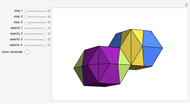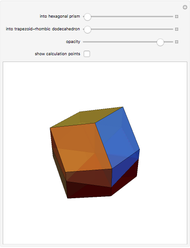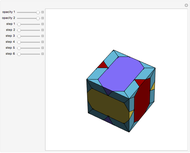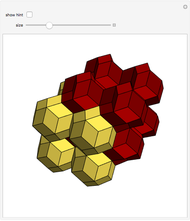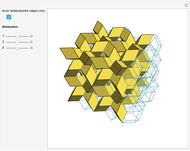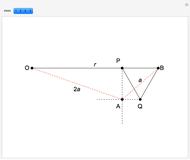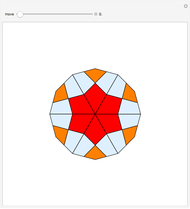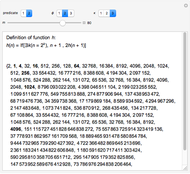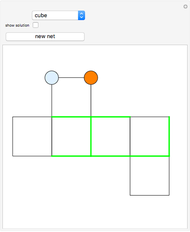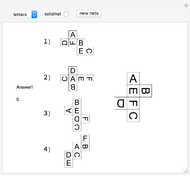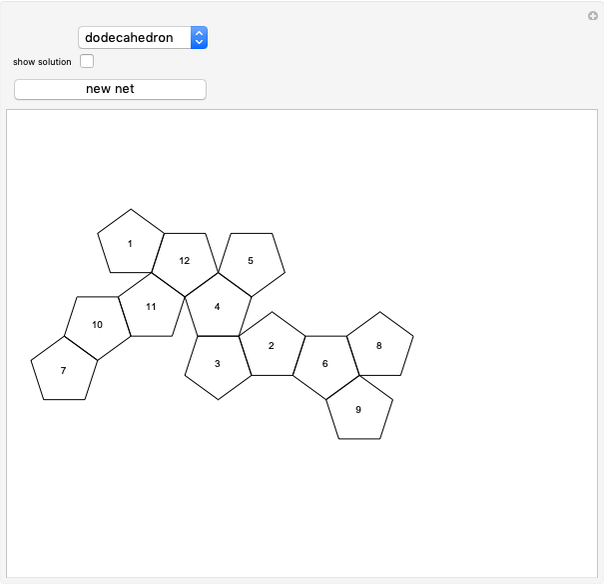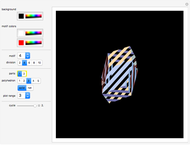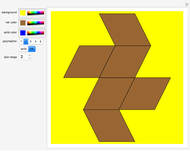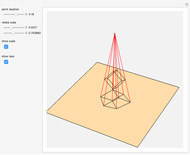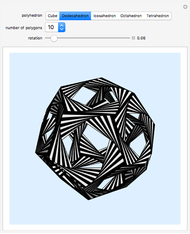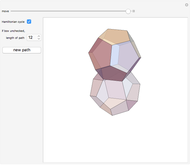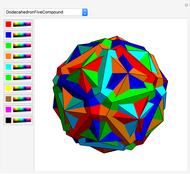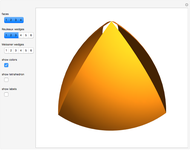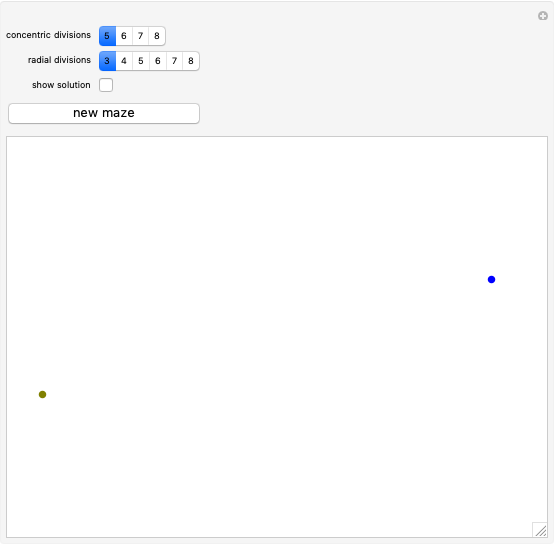Dissection of Two Stellated Dodecahedra

Requires a Wolfram Notebook System
Interact on desktop, mobile and cloud with the free Wolfram Player or other Wolfram Language products.
A small stellated dodecahedron (s.s.d.) and a great stellated dodecahedron (g.s.d.) are dissected and reassembled into a rhombic triacontahedron and a rhombic hexecontahedron.
Contributed by: Izidor Hafner (March 2011)
Open content licensed under CC BY-NC-SA
Snapshots
Details
The prolate rhombohedron (red frame) is a twentieth of a hexecontahedron; the solid pyramid (cyan frame) is a spike of the great stellated dodecahedron. So the rhombohedron has a surplus of three pyramids over the twentieth of the great stellated dodecahedron. Since there are 20 rhombohedra, the surplus is 60 pyramids. The pyramid (cyan frame) is a spike of the small stellated dodecahedron. The red pyramid is a part of the triacontahedron. The triacontahedron has five pyramids fewer than a spike of the small stellated dodecahedron. Since there are 12 spikes, the total deficit is 60 pyramids. So the surplus and deficit cancel.
Permanent Citation
"Dissection of Two Stellated Dodecahedra"
http://demonstrations.wolfram.com/DissectionOfTwoStellatedDodecahedra/
Wolfram Demonstrations Project
Published: March 7 2011







